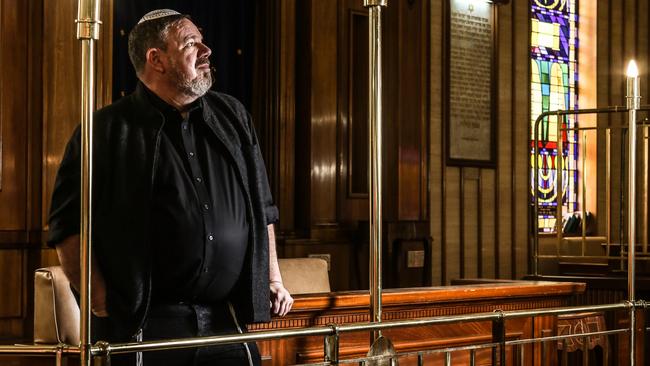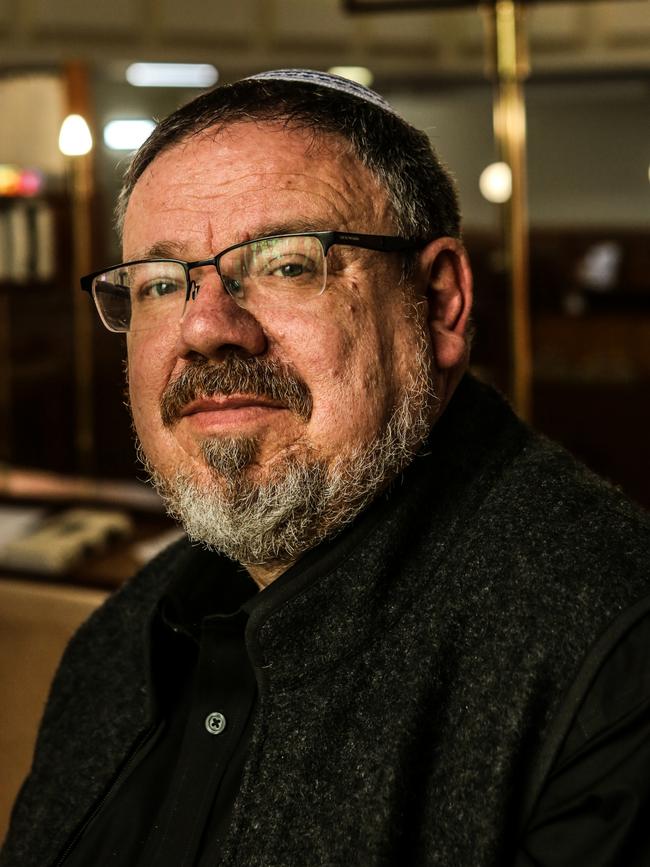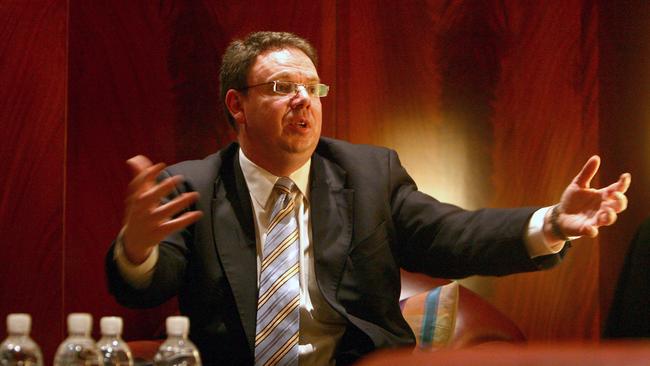Evan Thornley says this is the best investment in property
Forget investment apartments. The old-fashioned family home in a decent suburb is the best investment in the residential sector, the former tech leader and politician says.

Evan Thornley has coined a special name for what he believes might be the best way to invest in residential property, the “biggest blue ocean” he’s ever seen.
Thornley, a groundbreaking technology entrepreneur turned politician and now property investor, calls them “Rodwells” — robust older dwellings on well-located land.
It is a fancy term for what really is the good old well-built Australian home, located in a suburb on a decent block of land in Brisbane, Melbourne and Sydney, which has proven time and again to be the best buy in property.
Thornley is also adamant that investing in Rodwells via his LongView business will prove a far better and safer investment for residential landlords than the currently extremely popular model of buying and letting out a rental apartment to a tenant.
Thornley’s LongView Homes Investment Fund co-invests with homebuyers and homeowners in return for a share of the future capital growth of the property through a shared equity agreement, overlaying data analysis with old-fashioned on-the-ground knowledge of suburbs.
The fund has a target of beating the house price index by 70 per cent by collating a portfolio of investments in houses in areas where the data suggests land value will drive capital growth above the house price index.
“In simple terms, 17 per cent of the properties in Australia account for 51 per cent of the capital growth,” Thornley tells The Australian. “And those 17 per cent are the Rodwells of Sydney, Melbourne and Brisbane.
“So there’s a big addressable universe there. We’re not talking about a tiny little niche of properties. There’s a large number of them, but that still means there’s five out of six of the properties that we wouldn’t invest in. And one in six that we would.”

Thornley says he spent almost a decade researching the market. He believes there are no other businesses that truly aim to make money out of capital growth in residential property despite annual capital growth being about the size of the entire federal government budget or four times the earnings of every ASX company.
“The banks don’t care if a house goes up 1 per cent or 20 per cent. The developers don’t; they buy, build and flip. The sales agents say what ‘is the next deal’,” he says.
“So there’s always huge industries around residential property, but none of which are focused on capital growth. Not one. Now, that’s intriguing.
“The biggest wealth engine in this country by the length of the straight is capital growth on residential property. And there’s no boats on the water. It’s the biggest blue ocean I’ve ever seen.”
Thornley says he has already raised about $10m from investors and has about 40 homes with a value of more than $74m in the portfolio, typically worth between $800,000 to $4m, across the three cities. He eventually wants 200 homes in the fund, and believes he can achieve that within a year as LongView is currently doing at least three deals a week.
“I think we’re already getting a good diversity in the portfolio, but certainly when we’re at 200 homes in the fund you’ll have all the diversification you need. But also by the time we’ve got about 200 in the fund you’ll have enough turnover with that portfolio that the thing will throw off regular cashflow to the investors.”
Thornley, an internet pioneer in the 1990s with LookSmart and then a Labor parliamentarian in Victoria, says LongView’s research shows that traditional family homes see a better return on investment than newly built investment properties.
On average, LongView says the top half of capital city houses (by performance) double in value every six and a half years, while the bottom half double every 11 years. Regional houses double every 15 years.
“House prices have doubled roughly every 10 years for many decades in Melbourne and Sydney, so if you’ve purchased a good family home you’ve probably built wealth,” Thornley says. “Our fund aims to deliver results by doing what many Australians have done for themselves, but at scale, and without the costs, taxes and hassles of being a landlord.”
Thornley started out with a focus on first-home buyers and, as he says, “being like the bank of mum and dad to help people get (their purchase) over the line” through co-investing. He also has had a lot of migrant professionals who have been saving up for several years.

“They’ll say we have been living here but always wanted to buy that bigger house across the road. They’ll put in 60-odd per cent, we’ll put in 30-odd per cent and that gives them enough equity to buy the home and pay the stamp duty. And then we’ll get one-third of the capital growth on the back end.”
“Then we’ve had people come to us and say, look, I really want to buy this $2.7m property but I can only get to about $2.4m and then it gets tough. I don’t really want to go into nosebleed territory with the bank, so will you guys front the rest. And we say OK.”
An emerging source of deals is divorcees, Thornley says, usually when one partner is staying in the family home and needs to buy out the other, who is moving out.
“More and more people are coming to us with different needs. But it’s all about ensuring they have a dignified, secure housing solution. And we have a good investment for the investors.”
The investors in Thornley’s fund, he says, include wealthy individuals and family offices, non-profit corpus funds, and self-managed super funds. Ultimately, Thornley believes existing or aspiring landlords who own rental properties could prove to be an ideal target market – mainly, he says, because investing in rental properties offers a far lower return than residential family homes, and they can stay in the sector with his fund.
“In another part of our business, we manage 4000 rental properties and understand the challenges of both renters and landlords. And this is a whole lot easier way to invest in property, with better returns and less hassles and with a really positive social purpose,” Thornley says.
“So we’re just starting to see a trickle which I think will become a flood of landlords going ‘well hang on a minute. I want to be in property. I like it. It’s safe. I made good money in my family home. OK then.
“And I always tell them the irony of our business is that almost every client I talked to has made a better return on investment on the family home they bought for lifestyle than on the investment property that they thought they were buying to make money. And that’s even before tax.”
This rationale leads Thornley to discussing his future plans for a rental property fund, putting properties – more Rodwells than “Odwells”, as Thornley calls less robust houses – together in a structure that exists in many countries: long-term institutionalised rental housing.
It is not, though, the sort of rental fund that would have hundreds or thousands of apartments in it, or a build-to-rent model of one apartment block in particular. Thornley says previous attempts at funds that look like overseas residential rental funds suffer because yields are low in Australia compared to foreign markets.
“Every property market is a trade-off between capital growth and yield. And as it happens, Australia is arguably the single best capital growth market in the world. Which means as a matter of mathematical certainty, it’s one of the worst rental yield markets in the world,” Thornley says.
“If you’re going to be investing in residential property in this country, you have to be doing it for capital growth.
“That means it has to be focused on Rodwells.”





To join the conversation, please log in. Don't have an account? Register
Join the conversation, you are commenting as Logout